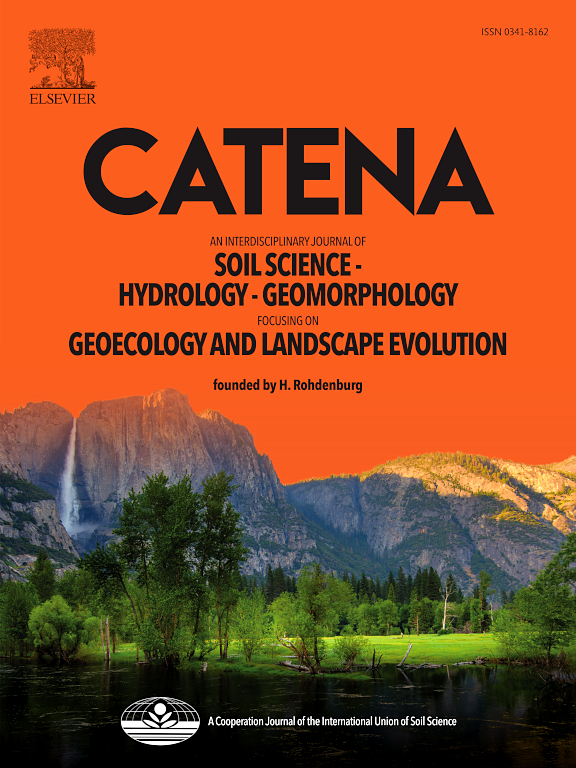Impact of water diversion practices on spatiotemporal changes in hydrologic and hydrochemical landscapes of surface and groundwater
IF 5.4
1区 农林科学
Q1 GEOSCIENCES, MULTIDISCIPLINARY
引用次数: 0
Abstract
Water diversion activities in lakes and the associated hydrological landscape ’diverted rivers/estuaries’ alter the lake’s spatiotemporal dynamics of hydro-environmental characteristics. However, only a few studies have focused on these complex effects in large lakes. We report here the results of an investigation conducted on the natural river estuary, diverted river estuary, and unchannelized lakeshore (blank control) within Hongze Lake. This lake is the largest on the eastern route of the South-to-North Water Diversion Project in China. Stable isotopes (δ18O, δ2H), major ions (Na, Mg, K, Ca, HCO3, SO4, Cl), trace elements (Sr, Pb, Al, Zn, Cu, As, F), and nutrients (NO3, TP) of the lake water and shallow and deep groundwater were analyzed for samples taken during the water diversion and drainage periods. The data indicate that water diversion and drainage activities accelerate the infiltration and recharge of lake water, involving dilution and enrichment of major ions in groundwater, respectively. However, the diverted river landscape induces the contribution of hydrology and hydrochemistry from deep groundwater to lake water and shallow aquifers during water diversion activities. The impact of these processes persists for approximately a month after the end of the water diversion period. Additionally, increased water temperature and acidity during the water diversion period release more trace elements from sediment into the lake and shallow groundwater. This process also enriches nutrient concentrations in the lake water. The results and the proposed model provide insights for the management of water quantity and quality during the implementation of water diversion practices in lake systems.
求助全文
约1分钟内获得全文
求助全文
来源期刊

Catena
环境科学-地球科学综合
CiteScore
10.50
自引率
9.70%
发文量
816
审稿时长
54 days
期刊介绍:
Catena publishes papers describing original field and laboratory investigations and reviews on geoecology and landscape evolution with emphasis on interdisciplinary aspects of soil science, hydrology and geomorphology. It aims to disseminate new knowledge and foster better understanding of the physical environment, of evolutionary sequences that have resulted in past and current landscapes, and of the natural processes that are likely to determine the fate of our terrestrial environment.
Papers within any one of the above topics are welcome provided they are of sufficiently wide interest and relevance.
 求助内容:
求助内容: 应助结果提醒方式:
应助结果提醒方式:


